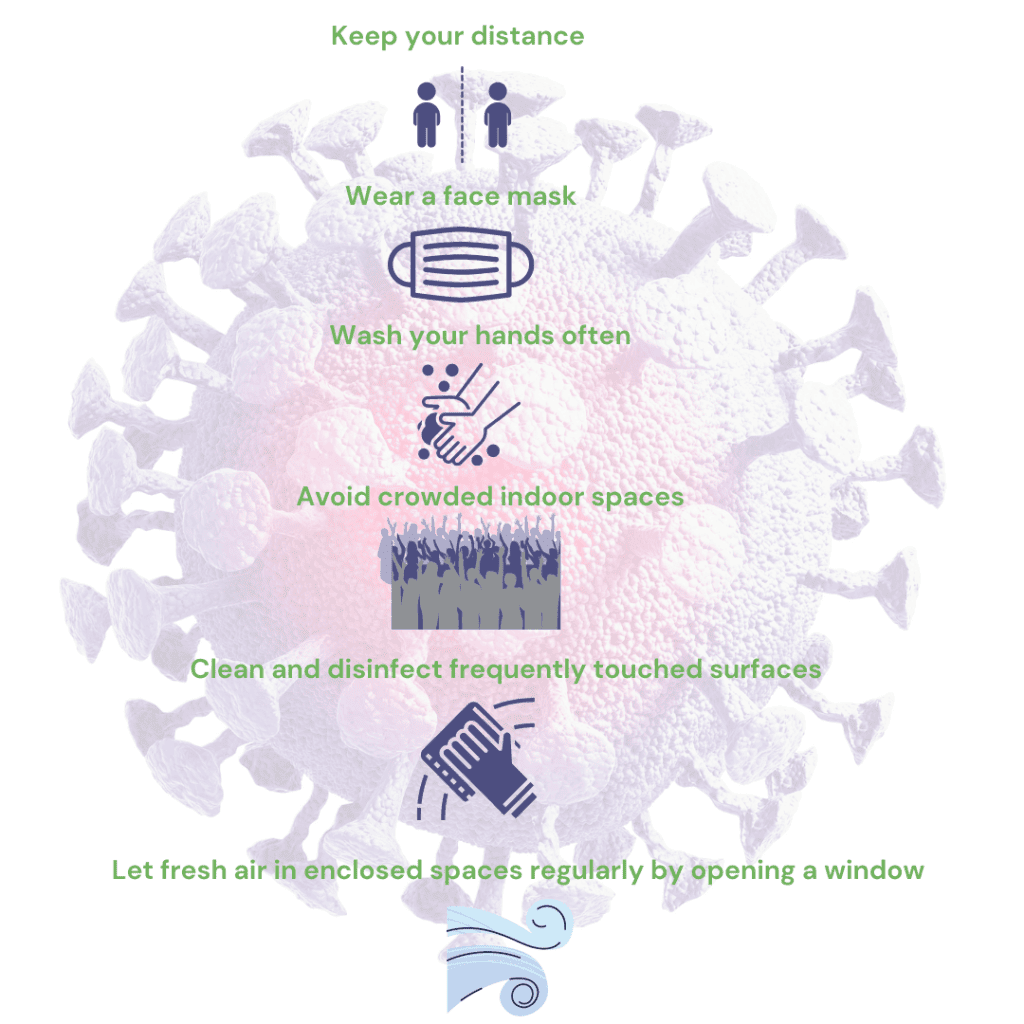COVID-19: Protecting yourself and others from the virus

This pandemic has been lonely and stressful. Worrying you may catch the virus and give to other people – possibly vulnerable loved ones – adds and extra layer of anxiety to the whole experience. That is why knowing how COVID-19 spreads is essential so you do not contract the disease or give it to others.
How COVID-19 spreads
The virus spreads mainly – and most easily – through close contact with another person. In this respect, it appears to be more infectious than influenza, but not as infectious as measles.
However, COVID-19 can sometimes spread by the air and through contaminated surfaces.
Person to person transmission
Being within 2 metres (6 feet) from a person with COVID-19 or having a direct contact with them puts you at the greatest risk of getting the virus.
Infection happens when a person is exposed to respiratory droplets from someone who has COVID-19. Droplets are produced every time the infected person coughs, sneezes, talks, sings or breathes. These droplets can cause infection when they are inhaled or deposited on mucous membranes, such as those that line the inside of the nose and mouth.
The size of the droplets varies – they can be large and even visible, to very small. While larger droplets will fall out of the air because of gravity, small ones spread apart in the air and when they dry very quickly, they can form particles.
The good news is that the concentration of the droplets decreases as they travel away from the person with COVID-19. As time passes, the amount of infectious virus in respiratory droplets decreases as well.
Airborne transmission
There have been instances when people contracted COVID-19, even though they were more then 6 feet away from the infected person.
Sometimes, small droplets and particles can linger in the air for longer and infect people even if they were not physically close to someone with COVID-19 or after the infected person has left the room. This kind of spread is known as airborne transmission. Tuberculosis, chicken pox and measles can spread like this, too.
Airborne transmission usually happens in enclosed spaces with inadequate ventilation, especially if the infected person is breathing heavily while singing or exercising. Under such conditions, the amount of infectious droplets or particles can become concentrated enough to spread the virus to other people. Those who contracted COVID-19 through airborne transmission were in the same space during the same time or shortly after the infected person left.
However, catching COVID-19 through close contact with an infected person remains much more common than airborne transmission.
Contaminated surfaces
Although it is possible to get COVID-10 by touching a surface or an object that has the virus on it and then touching your mouth, nose and eyes, this mode of transmission is not common.
Transmission from animals to people and vice versa
There have been reports of a small number of pets worldwide, including cats and dogs, who seem to have got the virus following a close contact with people with COVID-19.
Currently, the risk of COVID-19 spreading from animals to people is considered to be low.
Here is some advice on what to do if you have a pet.
Keeping yourself and others safe
The most effective way of preventing falling ill with COVID-19 is to limit your exposure to the virus. Here are some things you can do protect yourself and others from infection:

Do not forget to look after your mental health too! Try to keep in touch with colleagues, friends and family, even if it is over Zoom or FaceTime.
Further steps
Practicing social distancing, hand washing and wearing a mask are effective and relatively easy measures to follow. However, the risk of transmission is never fully eliminated. If you have an upcoming visit at care home or plan to spend time with someone vulnerable, you may want to consider getting tested for COVID-19. If that is something you would like to explore, please get in touch with us. Call 0191 543 9302 or email sales@geneblitz.com to find out more.

